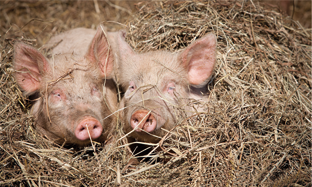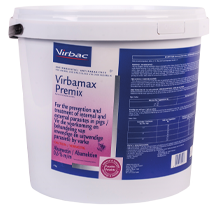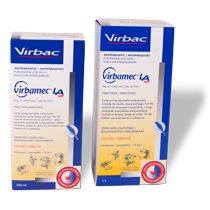
Parasite control in swine
Parasite control in swine stock is essential to keep livestock profits high and ensure the pigs are healthy for the abattoir. One of the most common types of parasites found in swine stock is Ascaris suum, a large intestinal roundworm. The female roundworms found in swine grow 25 to 40 cm in length; males only grow to about 25 cm.
Understanding the lifecycle of Ascaris suum is important to ensure optimal parasite control in swine. Females can produce a huge number of eggs – up to two million per day. Without adequate control of the parasite in swine, it is possible for it to completely take over the intestinal tract of the pig. The female can lay eggs for a year or longer.
The problem is that the eggs are hardly visible and have thick shells, with the ability to withstand many chemical disinfectants and temperature changes. Once present in the soil where swine stock is kept, the eggs can live for up to seven years, though prolonged exposure to sunlight helps kill them. Since the normal swine-stock area is sheltered against direct sunlight, the eggs can live in the soil for a long time, infecting piglets kept in the same environment.
Ascaris parasite infection leads to slower growth, tissue damage, and weight loss. Infected animals are also more vulnerable to other diseases. When animals are infected, the farmer has to spend considerably more to feed and maintain the condition of the pigs.
It is important to administer regular anthelmintic treatments and keep the swine environment free from the parasite’s eggs. Avermectin anthelmintic applications effectively kill parasites in their adult stage; such treatments can be injected. Farmers can also use in-feed premix applications. It is essential to treat sows at least seven days (and up to 14 days) before farrowing to help prevent egg transmission to piglets after birth.
Control can be improved through treatment of all swine stock once or twice annually – piglets must be treated when they are weaned and when entering the grower pens. All new stock should be treated. Once treated, it is essential to keep the treated animals away from contaminated areas. Disinfect all swine-stock areas. As part of the parasite-control regime, use egg-killing disinfectants. It is extremely difficult to eliminate the eggs completely from contaminated areas, but it is important to reduce their numbers.
View our range of products for treatment and control of this parasite in pigs and swine environments. Call our experts for more information regarding our products and their applications.



